![]()
Mon, June 17, 2013
This study was first published in Hebrew by The Meir Amit Intelligence and Terrorism Information Center. This is the updated English version and will be published in three parts. You can read part 1 here and part three here.
Overview
Hezbollah has been giving the Syrian regime increasing amounts of military support as the civil war drags on and the dangers to the regime’s survival grow. The support is mainly expressed by sending Hezbollah military-terrorist operatives to fight in Syria, in our assessment several thousand so far. Their presence was important in the campaign that led to the takeover of Al-Qusayr, south of Homs, and in protecting the grave of Al-Set Zaynab, a Shi’ite holy site south of Damascus. Hezbollah also provides the Syrian regime with intelligence and training, and participates in establishing Shi’ite and Alawite armed militias (“the popular army”) in preparation for the morning after the possible collapse of the Syrian regime. Hezbollah also struggles against the Syrian regime’s opponents inside Lebanon and conducts a pro-Syrian propaganda campaign.
Direct Hezbollah Participation in the Fighting
During the first year of the Syrian civil war Hezbollah was careful to keep a low profile in the fighting. In 2012 a limited number of Hezbollah operatives were sent to Syria and served mainly in advisory and security capacities and were not massively involved in the actual fighting. That apparently changed during the first half of 2013, as Iran and Hezbollah realized that the survival of the Syrian regime was seriously endangered, as were their own interests (their military assets and religious-sectarian interests). The change included sending Hezbollah forces to the campaign in Al-Qusayr, which fell into the hands of the Syrian army after heavy fighting with the rebels.
According to head of Israel military intelligence General Aviv Cochavi (March 2013), Hezbollah sent several hundred fighters from its special units to Syria. According to media reports, the numbers grew and as of May 2012 there were several thousand.[14] Hezbollah’s fighting in Al-Qusayr symbolized its being sucked deeper into the Syrian morass despite the price it had to pay in the internal Lebanese arena, in the Arab-Muslim world and in its faceoff with Israel (See below.).[15] In our assessment, it is liable to be sucked deeper into the Syrian civil war as the Assad regime loses the ability to govern and Iran and Hezbollah’s concerns grow regarding a collapse of the regime and possible damage to their vital interests.
However, so far Hezbollah’s direct involvement in the fighting has not extended to the main battle sites and it cannot tip the scales in the war. Its activities have focused on locations where it has religious-sectarian interests (Al-Qusayr, the grave of Al-Set Zaynab).[16] According to a May 4, 2013 article in the Lebanese newspaper Al-Safir Hezbollah’s involvement in the fighting in Syria is still local and its goals are narrow. Hezbollah has not yet brought all its weight to bear, an option it may choose if the conflict becomes broader and if more elements hostile to the Assad regime join the war.
Other Areas of Hezbollah Support
In addition to sending operatives, Hezbollah provides Syria with military, security and propaganda support:
- Training: Hezbollah trains the military and special forces loyal to Assad in guerilla warfare skills, where it has operational experience: urban warfare, sabotage, sniping, etc. According to an article in the French newspaper Le Figaro, Hezbollah and the Iranians’ main support is in training Bashar Assad’s forces (Le Figaro, August 17, 2012). According to Colonel ‘Arif Hamoud of the free Syrian army, Hezbollah’s involvement in Syria began with the training of Assad’s forces in guerilla tactics (Usatoday.com, March 5, 2013).
- Intelligence: According to the Lebanese newspaper Al-Shira’a, Hezbollah sent groups of its military operatives to Syria to help Syrian intelligence (Al-Shira’a, July 11, 2011). According to Israel’s military intelligence head,[17] both Iran and Hezbollah provide the Syrian regime with intelligence.
- Securing the Syrian-Lebanese border: Hezbollah carries out preventive activities in the Beqa’a Valley along Lebanon’s border with Syria. The border is traditionally porous and both Lebanese and Syrian government control over it is weak. Hezbollah’s secures the logistic network from Lebanon to Syria and prevents the passage of Lebanese operatives and weapons for the rebels (Hezbollah repeatedly accuses its Lebanese opponents of supporting the Syrian rebels.).[18]
- Preemptive activities in the internal Lebanese arena: Hezbollah makes it difficult for the Syrian opposition in Lebanon to take action through harassment, threats, detentions and handing wanted Syrians over to Syrian regime.
- Propaganda: Hezbollah disseminates pro-Syrian propaganda using its own media, and Lebanese and Arab media. Hezbollah represents the Syrian regime as consistently supporting the Palestinians by supporting the anti-Israeli “resistance” [i.e., terrorism] and as a main element in the anti-Israeli “axis of resistance and rejection.” The opponents of the Syrian regime, on the other hand, are represented as servants of a Western-Arab “conspiracy” or as “terrorists” (the organizations affiliated Al-Qaeda and the global jihad are referred to as takfirs) who go to Syria to topple the regime and incite a religious-sectarian civil war.
Hezbollah Support for the Syria Regime
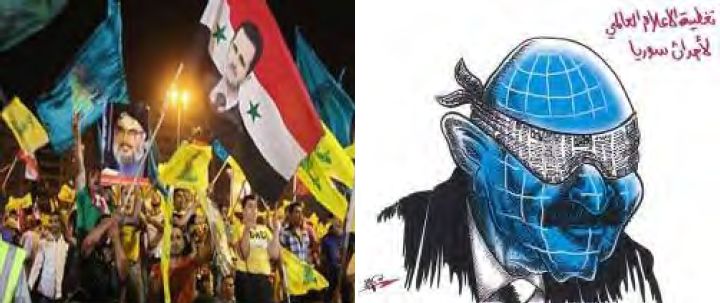
Left: Hezbollah activists in Lebanon demonstrate in support of the Assad regime (Ilaf website, from All4Syria, July 2012). Right: The world media blindfolds itself not to have to see the events taking place in Syria (Hezbollah’s Al-Intiqad website)
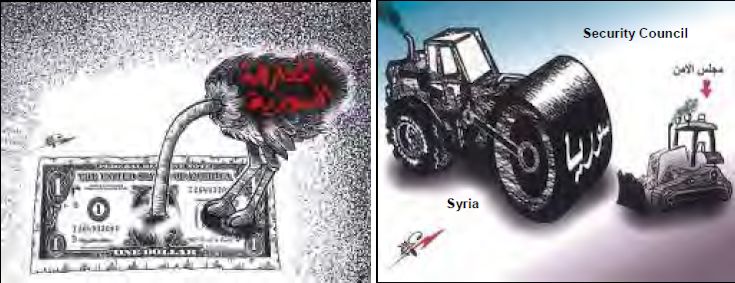
Left: The Syrian opposition buries its head in the US dollar (Hezbollah’s Al-Intiqad website). Right: “The UN Security Council will never overcome Syria” (Hezbollah’s Al-Intiqad website)
Preparations for the Morning After the Collapse of the Syrian Regime: Establishing Shi’ite and Alawite Militias
There are an estimated 400,000-450,000 Shi’ites in Syria, almost 2% of the total Syrian population.[19] Most of them live in the regions around Damascus, Homs and its outlying areas and in the outskirts of Aleppo and Idlib. There are also small Shi’ite communities in Daraa’, eastern Syria and on the coast. Most of the Shi’ites are Syrian by birth but there is also a minority of Iraqi Shi’ites who sought asylum.
During the Syrian civil war the circumstances of the Shi’ites have worsened because of their proximity to the regime and because they live within Sunni areas (such as Idlib and the outskirts of Aleppo and Homs). As the fighting escalated and the Syrian regime’s ability to govern weakened (especially after the middle of 2012) attacks on Shi’ites escalated and there were increasing numbers of murders, abductions and attacks on clerics. The harassment and increasingly religious-sectarian nature of the Syrian conflict led to concern among the Syrian Shi’ites that the fall of the Assad regime would lead to a large-scale settling of accounts and that their actual physical existence would be in danger. Their concerns are shared by the ruling Alawites, who are centered mainly along a strip of coastline in Syria’s west and are considered Shi’ites by Iran and Hezbollah.[20]
Thus, as part of preparing for the morning after the fall of the Assad regime, Iran and Hezbollah support and aid the Shi’ites and Alawites in Syrian regime in their preparations to defend themselves from possible Sunni attacks. They are concerned that after the fall the Shi’ite-Alawite population will be exposed to acts of revenge from the Sunni opposition and the Sunni networks affiliated with Al-Qaeda (especially the Al-Nusra Front) which are important components of the rebel forces fighting Assad.
In preparation for the possible collapse of the Syrian regime, in the summer of 2012 Iran and Hezbollah began organizing a Shi’ite-Alawite “popular army.” According to the lecture given by General Aviv Cochavi (March 2013), it had about 50,000 men.[21] They are trained by Hezbollah and financed by Iran, and include “popular committees” and networks for self defense established in Shi’ite and possibly Alawite towns and villages.[22] On August 14, 2012, American Secretary of Defense Leon Panetta said Iran was organizing and training a militia to support the Syrian regime (Telegraph.co.uk and Military.com websites, August 15, 2012). While he did not specifically mention Hezbollah, in our assessment it can be assumed that the militia in question is Shi’ite-Alawite and was being set up by Iran and Hezbollah.
The Lebanese media reported that according to “a Hezbollah source” young Syrian Shi’ites were being given military training in Hezbollah camps in the Lebanese Beqa’a Valley to be able to defend their villages from the Sunnis (Al-Shira’a, Issue 127, early July 2012). According to a report based on a Syrian opposition source, Hezbollah operatives took over a number of villages with Shi’ite majorities along the Syrian coast in preparation for the creation of “an Alawite canton” (Okaz, Saudi Arabia, October 17, 2012).
The Lebanese daily newspaper Al-Shira’a reported the deployment of a popular army and that Iran intended to increase the number of its fighters (March 12, 2013):
- According to the report, the popular army was being established in the coastal region of Latakia and at the grave of Al-Set Zaynab south of Damascus (See below.). It was also deployed in the region of Al-Zabadani (northwest of Damascus near the Lebanese border) where it collaborates with the IIRG forces which have been stationed there for many years. Iran also intended to assign popular army forces to defend the Shi’ite villages near the Syrian-Lebanese border in the northern Beqa’a Valley (i.e., the region of Al-Qusayr).
- Qods Force commander Qassem Suleimani formulated a plan to increase the size of the popular army after his visit to Lebanon at the end of February 2013. According to the plan it will consist of 150,000 armed men and in addition to Syrians, it will include Shi’ite volunteers from the various countries in the region (Iran, Lebanon, Iraq).
The Main Campaign: Al-Qusayr (South of Homs)
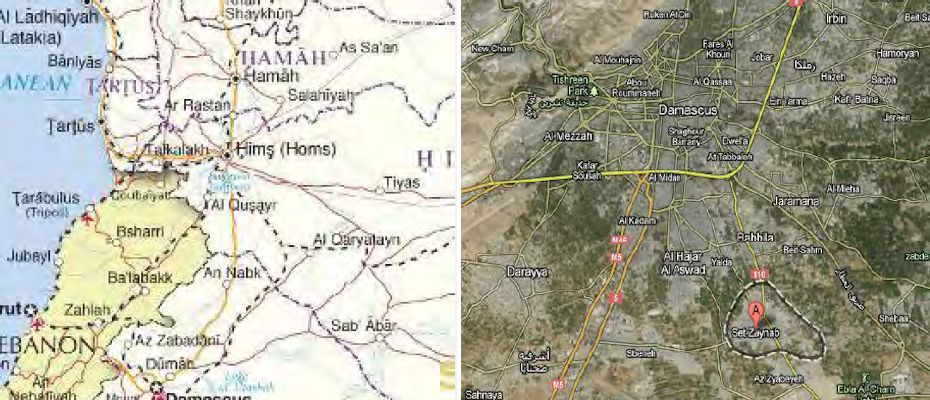
Left: Al-Qusayr, a main strategic crossroads (Nationsonline.org/oneworld/map website). Right: Aerial photo of the Al-Set Zaynab region (Google earth website)
Background
During the first half of 2013 the Syrian city of Al-Qusayr and its environs were the main scene of Hezbollah’s fighting in Syria. The fighting in the region began at the beginning of 2012, worsened in 2013 and was decided on June 5, 2013, when Hezbollah and Syrian army forces conquered the city.
Al-Qusayr is located 35 kilometers (or almost 22 miles) south of Homs and 15 kilometers (or nine miles) from the Lebanese border. It was home to an estimated 40,000 Syrians, most of them Sunnis, who fled the city during the heavy fighting. There is also a small Catholic minority (about 10% of the population) and several hundred Alawites. The city is a vibrant commercial and agricultural center with commercial relations with Lebanon. According to Hezbollah, 30,000 Lebanese live in Al-Qusayr’s environs in 23 towns and villages (Assafir.com website).
Al-Qusayr’s Importance to Hezbollah
Geographically, Al-Qusayr and its villages have military importance for both the Syrian regime and the rebels: the main road from Damascus to Homs runs nearby and from there north to Hamah and west to the Alawite stronghold on the coast (See map, above). Because of its geographic importance the rebels used it as a base from which to block the main route from Damascus to the sea and thus cut off the Syrian regime’s forces and their supply lines.
For Hezbollah as well, Al-Qusayr had great military importance because of its proximity to Lebanon and because it commands the road leading from Homs to the northern Beqa’a Valley (the Hermel region). From there the road leads to Baalbek and along the Beqa’a Valley where the Shi’ites live and where Hezbollah has its strongholds.[23] The road leading from Syria to the northern Beqa’a Valley is used by Hezbollah to transport weapons from Syria to Lebanon and to send its fighters and weapons to Syria, and vice-versa, the rebels may also use the Al-Qusayr region to receive supplies and reinforcements from their supporters in Lebanon, especially from around the city of Tripoli.
Al-Qusayr’s strategic military importance was the subject of an Al-Manar report on May 21, 2013, following the major attack on the city. Entitled “The mother of all battles — why Al-Qusayr?”[24] it described Al-Qusayr as “a strategic point located at a main crossroads linking Damascus, Homs and the Syrian coast.” It is also important because of its proximity to Lebanon and its long history as an important commercial center between Lebanon and Syria. Brigadier General (Ret.) Elias Hana told Al-Manar that if the Syrian regime controlled Al-Qusayr it could guarantee the existence of a security zone from Damascus to Homs and from there to the coast. According to Brigadier General (Ret.) Amin Hatit, control of the Al-Qusayr region would prevent supplies from reaching the rebels from their supporters in Tripoli.
However, for Hezbollah the importance of Al-Qusayr went beyond the military-strategic because it is the home of a large Shi’ite population (30,000, according to Hezbollah) living alongside the Sunnis. Hezbollah feels religious-sectarian solidarity with the Shi’ite population, which has close contacts with the Shi’ites in Lebanon. The weakening of the Syrian regime in Al-Qusayr led, according to Hezbollah, to harassment of the local Shi’ite population and made it imperative for Hezbollah to come to their aid.
In a speech given on April 30, 2013, which in our assessment prepared the ground for the major offensive on Al-Qusayr, Hassan Nasrallah described at length the situation in Al-Qusayr after the fighting intensified (Al-Manar, April 30, 2013):
“I have already spoken about the environs of Al-Qusayr and said that there are more than 30,000 Lebanese living in a number towns, among them Muslims and Christians, and they do not all belong to one sect. I said that they had become a target and were exposed to burning, their houses were burned, some of the villages were occupied, there were killings, there were abductions and they were prevented from going to work and tilling their fields. They are threatened because they happen to live in the same villages…[and] the dangers have increased in recent months because of the events on the ground [in Syria] when the Syrian army was forced to evacuate a number of areas. Thus [the Shi’ites] living in the environs of Al-Qusayr came face to face with the armed groups…It was only natural that the [regular] Syrian army and the popular forces supporting it and the local residents received the proper aid and support…to be able to cope with the threat. Events occurred in recent weeks around Al-Qusayr and nothing has been settled yet. That is because those villages and areas are still exposed to acts of aggression, snipings, shellings and attacks…”[25]
Sheikh Naim Qassem, Nasrallah’s second in command, gave a more detailed description of Hezbollah’s involvement in the fighting around Al-Qusayr. He said Hezbollah had come to the aid of the 30,000 Shi’ites living in the Syrian villages in the region of the [northern] Beqa’a Valley after armed men had taken over two of the villages and there was concern that the villagers would flee to Lebanon. He said that Hezbollah had given the villagers training, armed them and helped them defend themselves. He claimed Hezbollah was not meddling in Syria’s internal affairs and it had even complained to the Lebanese government that it was not helping Lebanese citizens living in Syria (Al-Anbaa’, Kuwait, April 29, 2013).
The Campaign in Al-Qusayr
The campaign for the city of Al-Qusayr and its environs began more than a year ago. During the first months of 2013, especially beginning on May 19, the battles in the region intensified until the Syrian army and Hezbollah forces conquered it on June 5, 2013. Hezbollah’s military involvement in the campaign was prominent and in our assessment played a major role in the fighting.
The Syrian army, aided by Hezbollah and local militias, fought the so-called “free Syrian army” forces. In our assessment, several thousand Hezbollah operatives fought in the Al-Qusayr campaign, some of them arriving on the eve of the May 19 offensive. One picture taken at the time showed them armed with tanks (See below.). The free Syrian army was headed by a military council subordinate to headquarters in Homs (All4Syria website quoting the free Syrian army commander of the Homs front). In addition, operatives from the Al-Qaeda-affiliated Al-Nusra Front fighting the Syrian army reported that in the spring of 2013 its men had entered the region of the villages where Sunnis live.[26]
The fighting in Al-Qusayr and its environs – general description:[27]
- During the past year there was heavy fighting in the city of Al-Qusayr. It included small arms, IEDs, artillery shells and Syrian army aerial attacks. Both sides tried to increase their territorial holdings in the various neighborhoods, especially in those with key buildings and installations (the intelligence building, municipality, main checkpoints). It was reported that a large number of local residents fled and extensive damage was done to Al-Qusayr’s residential structures. However, before the May 19 offensive, an estimated 25,000 local residents still lived in the city (Agence France-Presse, May 10, 2013). In our assessment most of them later fled.
- On May 19, 2013, a large Syrian army force attacked, supported by thousands of Hezbollah operatives, intending to reach the city center and take control. The offensive included aerial attacks and artillery fire. According to media reports Hezbollah operatives reached the center of the city where Al-Nusra Front fighters (perceived by Hezbollah as the main enemy) were located[28] (Al-monitor website, June 1, 2013).
- On June 5, 2013, after two and a half weeks of heavy fighting, the Syrian army and Hezbollah forces conquered the city of Al-Qusayr. The Syrian opposition issued a statement saying that its fighters had been forced to withdraw because of the regime’s superior military force, the shortage of supplies and Hezbollah’s involvement (BBC in Arabic, June 5, 2013). Shi’ites in Lebanon celebrated the victory, in which Hezbollah played a major role.
In addition to the battle for Al-Qusayr, there was fighting in other zones:
- There were extensive confrontations in dozens of villages in the environs of Al-Qusayr where Syrian army and Hezbollah forces fought the rebels. Hezbollah sent its forces to help the local Shi’ite residents and to advance toward the city itself to support the Syrian army soldiers. There was sporadic fighting in the area around Al-Qusayr (firefights, IEDs) which occasionally turned into attempts to take over villages. In our assessment, after the fall of Al-Qusayr, Hezbollah and the Syrian army will now complete their cleansing of the villages in its environs.
- The rebels occasionally shelled the city of Hermel (in the northern Beqa’a Valley in Lebanon) in response to Hezbollah’s direct involvement in the fighting and to ease the pressure on them. The Lebanese media reported that a number of Lebanese civilians had been injured in the shelling, which also disrupted the daily lives of the local residents in the Hermel area. The rebels threated to extend the shelling to other Shi’ite locations in the Beqa’a Valley and southern Beirut (where Hezbollah has its stronghold). With the fall of Al-Qusayr, 18 rockets were fired from Syria into the regions of Baalbek and Hermel by the rebels. It can be assumed that they will continue their attempts to harm Hezbollah in Lebanon.
Pictures from the Campaign in Al-Qusayr and Its Environs
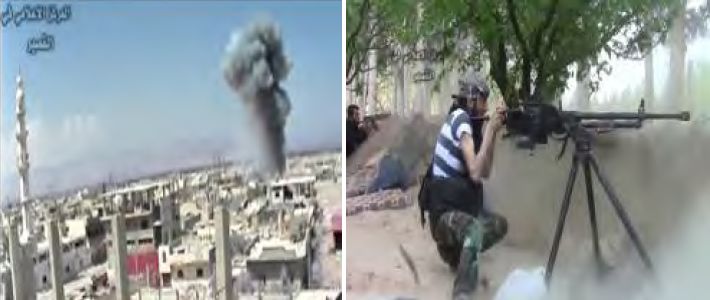
Left: Syrian planes attack rebel targets in Al-Qusayr, May 6, 2013 (Facebook.com). Videos were uploaded to the Internet documenting the Syrian air force attacks on targets in the city. Right: Rebels fight Hezbollah operatives (Facebook.com)
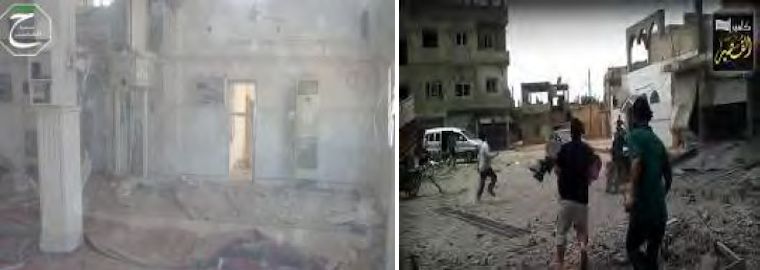
Left: Damage done to the Al-Rahman mosque in Al-Qusayr by Syrian air force planes on May 5, 2013 (Facebook.com). Right: Damage inflicted on the city of Al-Qusayr (Facebook.com)
Hezbollah Operatives in the City of Al-Qusayr and Its Environs
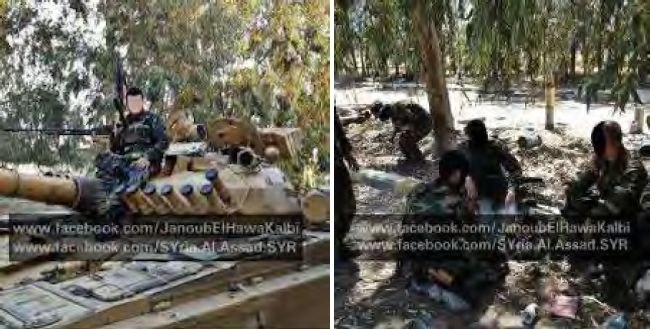
Hezbollah operatives in the region of Al-Qusayr (Pictures from the Facebook page of the Campaign for Defense of the Grave of Al-Set Zaynab)
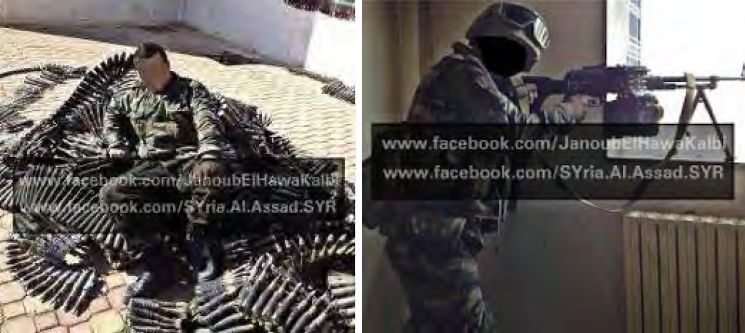
Hezbollah operatives in Al-Qusayr (Pictures from the Facebook page of the Campaign for Defense of the Grave of Al-Set Zaynab, May 14, 2013)
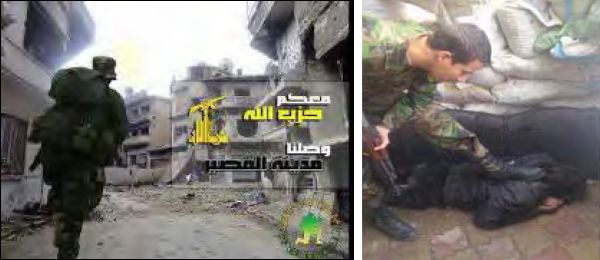
Left: From the Facebook page of Hezbollah operative Muhammad Khalil Nasr al-Din, killed in the fighting: “Hezbollah is with you, we have arrived in Al-Qusayr” (May 19, 2013). Right: A Hezbollah operative in Al-Qusayr puts his foot on the back of a rebel captive (Facebook page of the residents of south Lebanon, May 19, 2013).
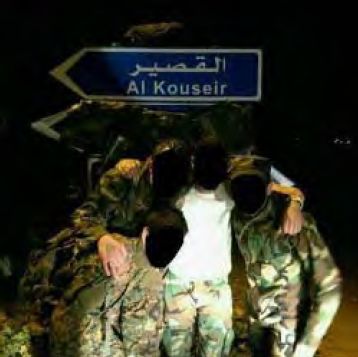
Hezbollah operatives on the way to Al-Qusayr (Facebook page of Muhammad Khalil Nasr al-Din, who died in the fighting, May 19, 2013)
An Explosive Friction Zone: The Grave of Zaynab, Sacred to Shi’ites (South of Damascus)
Background
There are dozens of sites in Syria sacred to the Shi’ites, the most important of which is the grave of Al-Set Zaynab (or Al-Sayyidah Zaynab), the daughter of the Imam Ali bin Abu Taleb, the founder of Shi’a and the grandson of the prophet Muhammad.[29] The grave is a Shi’ite holy site and site for Shi’ite pilgrims from all over the world, especially from Iran, Iraq, Lebanon, the Gulf States, India, Pakistan and Afghanistan.
The grave of Al-Set Zaynab is located in the heart of a Sunni region about ten kilometers (or about six miles) south of Damascus, on the road leading northward to the Damascus international airport and southward to the city of Al-Suwayda. A large tourist industry has grown up around the site to serve the Shi’ite pilgrims (See pictures), with the city of Al-Sayyidah Zaynab at its center. Administratively it belongs to the Rif Dimashq Governorate and is home to an estimated 150,000 residents (Wikipedia).
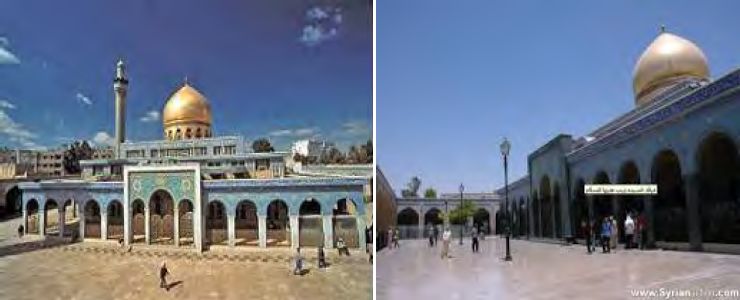
Left: The compound of the grave of Al-Set Zaynab, including the mosque and institutions for religious studies. Right: The grave of Al-Set Zaynab (Lions of Iraq forum website, May 2011).
The mosque over Zaynab’s grave, with its famous dome, is an imposing site decorated with gold and built in the Shi’ite architectural style, and is considered one of the Shi’ites’ most important religious structures. It has two entrances, one in the north and one in the west opening onto the city’s main market. Various institutions for religious studies are located around the mosque.

Left: The grave of Al-Set Zaynab, located inside the mosque (YouTube). Right: The mosque’s impressive chandelier (YouTube).
Attacks on the Grave Compound
During the second half of 2012, when the Syrian civil war went into high gear, opponents of the Assad regime initiated attacks on the compound around the grave. On May 5, 2012, a mortar shell reportedly fell inside the compound, apparently fired by operatives affiliated the global jihad (Tabanak.ir website). On June 14, 2012, a booby-trapped car driven by a suicide bomber exploded in the parking lot. The suicide bomber apparently broke through the barrier to the lot and was shot in the chest but still managed to detonate the bomb. No organization claimed responsibility for the attack (Aksalser.com and Alnour.com.lb websites). On October 31, 2012, an IED on a motorcycle exploded near the grave. At least eight people were killed and dozens were wounded. The site of the explosion was close to a hotel frequented by pilgrims (Almasyaloum.com website).
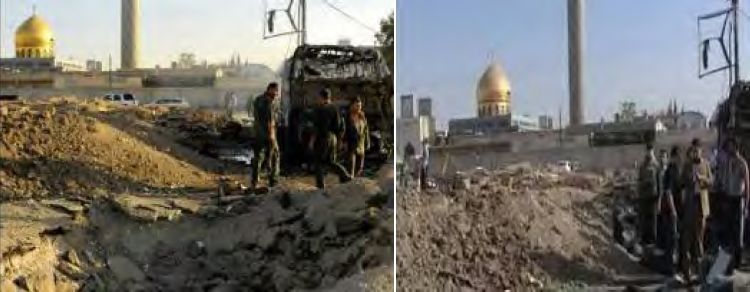
The explosion in the parking lot, June 14, 2012 (Left photo: Alalam.ir website. Right photo: Alnour.com.lb website)
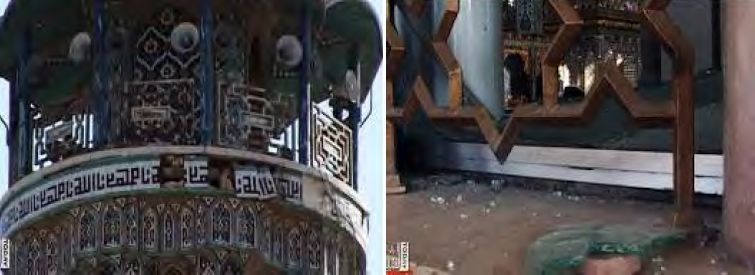
Left: The damage done to one of the mosque’s two minarets by the June 14, 2012 explosion (Shia-today.com website). Right: The damage done to the mosque by the June 14, 2012 explosion (Shia-today.com website)
During the first half of 2013 Salafist networks specifically called for the destruction of the mosque over the grave. For example, on his Facebook page (April 4, 2013) and using Twitter, the Salafist sheikh Abd al-Rahman al-Dimashqiah called for the structure above the grave of Al-Set Zaynab to be destroyed (Afadak.com website).[30] In February 2013 there were posts on the Internet claiming that free Syrian army fighters had called for the destruction of the grave of Al-Set Zaynab. On July 26, 2012, the Saudi Arabian Wahabi channel Safa appealed to the free Syrian army to destroy the grave (Iraqcenter.net website).
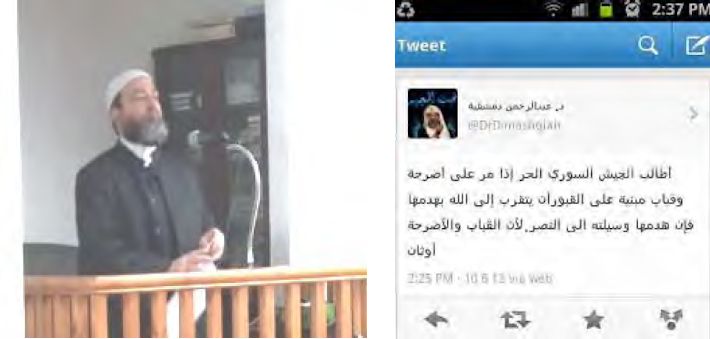
Left: Salafist Sheikh Abd al-Rahman al-Dimashqiah delivers a sermon in a mosque in Cardiff, the capital of Wales (Dimashqiah.com website). Right: Salafist Sheikh Abd al-Rahman al-Dimashqiah calls on the free Syrian army to come closer to Allah by destroying buildings and domes symbolizing the worship of idols (Afadak.com website).
During the first half of 2013 the harassment at the grave of Al-Set Zaynab worsened, apparently because of the incitement to destroy it. In January 2013, operatives of the Al-Nusra Front attacked it. On February 13, 2013 jihadi Salafists attempted to enter the compound and blow up the mosque. According to a report from April 2, 2013, Al-Nusra Front operatives took control of a neighborhood close to the grave. They then captured the commander of the Abu al-Fadhel al-Abbas Brigade, a Shi’ite militia network formed to protect the site (Alksalser.com website).[31]
On April 18, 2013, according to reports, a group of Hezbollah operatives in the compound was attacked by Al-Nusra Front operatives and suffered heavy losses. Hezbollah lost control of territories around the compound but counterattacked to recover them. The free Syrian army was also involved in the fighting. According to a free Syrian army announcement on April 19, 2013, its operatives attacked a vehicle carrying Hezbollah operatives to the compound and killed several of them (Alwatan.com website).
Shi’ite Militia Network Formed to Defend the Grave of Al-Set Zaynab
At the end of 2012 — beginning of 2013 the various Shi’ite networks involved in defending the grave of Al-Set Zaynab formed a framework of Shi’ite militias called the Abu al-Fadhel al-Abbas Brigade. Their objective is to defend the compound of the grave of Al-Set Zaynab from global jihad attacks. The Abu al-Fadhel al-Abbas Brigade reportedly has operatives from Iraq, Syria, Lebanon, Iran, Pakistan and Afghanistan (Al-Arabiya TV, April 5, 2013). The militia network was commanded by Maher Ajeeb Jatha (Abu al-Ajeeb) from the village of Nubl in the environs of Aleppo, who was captured (and killed, according to another version) by the Al-Nusra Front. Shi’ite militiamen operating in the region are supported by operatives from the Shabiha, a security entity that does not belong to the regular Syrian army suppressing the rebellion.[32]

“Abu Ajeeb,” nickname of the commander of the Abu al-Fadhel al-Abbas Brigade captured (and possibly killed) by the Al-Nusra Front (Alsalser.com website).
The Abu al-Fadhel al-Abbas Brigade has a significantly large number of operatives from Iraq,[33] estimated by the Washington Post at 200 (Washington Post, May 25, 2013). Prominent among them are operatives from the Asae’b al-Haq wal-Jaish al-Mahdi, two Iraqi Shi’ite militias formed and handled by the Qods Force to fight the American forces (with Lebanese Hezbollah support) (Elaph.com website). At the beginning of May 2013 It was reported that there was a campaign in the Shi’ite districts of Iraq to enlist Shi’ite volunteers to fight in Syria. They reportedly had 30,000 volunteers. Prominent among them are operatives from the Asae’b al-Haq and Hezbollah battalions. According to the Internet, Qassem Suleimani, commander of the Qods Force, instructed the militias that fought in Iraq at Iran’s behest to send men to Syria to support Assad’s forces (Faceiraq.com website, April 28, 2013). The volunteers were supposed to reinforce the Abu al-Fadhel al-Abbas Brigade forces as well as a new Shi’ite network called the Al-Taff Brigade[34] (Al-Mustaqbal, May 8, 2013).
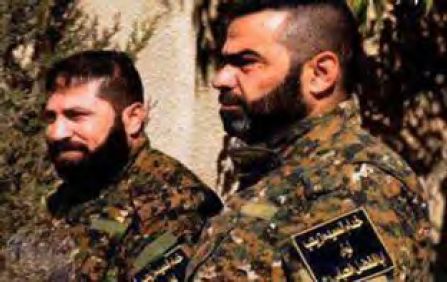
Abu al-Fadhel al-Abbas Brigade uniforms: the shoulder patch reads “The servants of Al-Set Zaynab, Abu al-Fadhel al-Abbas Brigade, may peace be upon them” (Firstpost.com website)
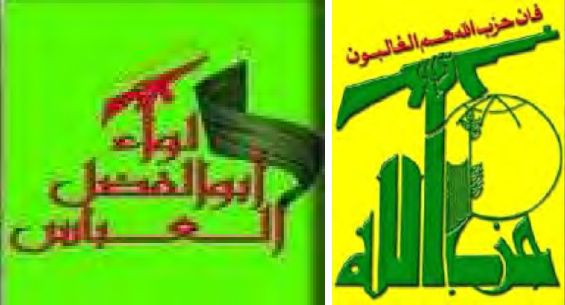
Left: The logo of the Abu al-Fadhel al-Abbas Brigade (similar to that of Hezbollah). Right: The logo of Hezbollah in Lebanon.
Abu al-Fadhel al-Abbas Brigade fighting focused on the region of the grave of Al-Set Zaynab but also reportedly fought in other locations. They waged several determined battles against jihadist Salafists near the grave and reportedly prevented them from entering the compound (Shia-news.com website). Pictures from the location:
Hezbollah Fighting at the Compound of the Grave of Al-Set Zaynab
During the second half of 2012, in light of the attacks on the compound, Hezbollah sent operatives to support the defenders. They participated in the battles waged at the end of 2012 and the beginning of 2013. The Syrian rebels captured a Hezbollah fighter named Hassan al-Miqdad who claimed he belonged to a group of 250 operatives stationed at the grave of Al-Set Zaynab.
In our assessment, at least 20 Hezbollah operatives were killed in the battles around the grave, most of them from south Lebanon. Their bodies were returned to Lebanon shortly after their deaths and they were buried in their villages. In some instances they were declared to have been killed defending the grave of Al-Set Zaynab and in some instances photographed at the site. A list of the 20 operatives killed was posted on the Facebook page of the residents of south Lebanon (May 14, 2013) (See below.).
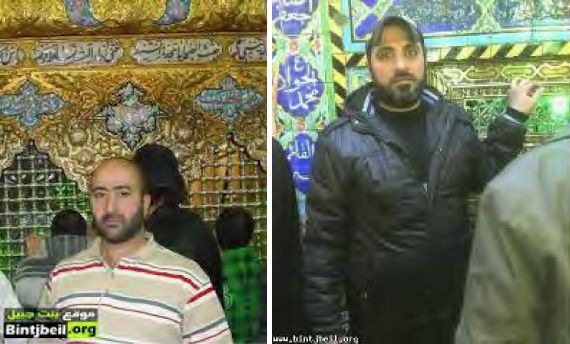
Left: Haidar Muhammad Ayoub (“Sajed”), killed during an exchange of fire with free Syrian army fighters. He was photographed standing near the grave of Al-Set Zaynab (Bint Jbeil website, April 27, 2013). Right: Hezbollah operative Hussein Abd al-Latif Munis from the village of Halousia in south Lebanon, killed while defending the grave of Al-Set Zaynab. He was photographed standing near the grave of Al-Set Zaynab (Bint Jbeil website, May 2, 2013)

Announcement of the death of Hezbollah operative Yassin al-Habaj. According to the text he was killed “defending the grave of Al-Set Zaynab” (Facebook, October 11, 2012)
The Defense of the Grave of Al-Set Zaynab in the Speech Given by Hassan Nasrallah and Reaction to It
On April 30, 2013, Hassan Nasrallah gave a speech in which he claimed that armed groups, especially the groups of takfirs[35] [i.e., those affiliated with Al-Qaeda and the global jihad], threatened to take over the city and grave of Al-Set Zaynab. He said that they might damage the grave and that they had no ideological or religious inhibitions in that respect. Proof, he said, was the damage they had done to the holy sites and graves in other countries (giving as examples Iraq, Mali, Libya, Tunisia and Egypt).
He threatened that damage done to the grave of Al-Set Zaynab might lead to a sectarian civil war between Sunnis and Shi’ites, adding that “if the fundamentalist groups blow up or destroy the grave there will be very serious consequences which will create a situation no one will be able to control…” He hinted that Hezbollah operatives would fight to defend the grave, saying that if necessary “the noble jihad fighters [i.e., Hezbollah operatives] will prevent the fall of the city of Al-Sayyidah Zaynab and the grave of Al-Set Zaynab…”
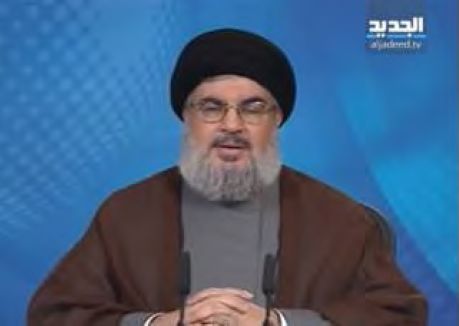
Hassan Nasrallah gives a speech (April 30, 2013) threatening to use “noble jihad fighters” to prevent the fall of the town of Al-Sayyidah Zaynab (YouTube).
In response to the speech the free Syrian army said that for some time it had been a mere 100 meters from the grave compound. According to the announcement it could have damaged the grave compound several months ago but did not do so because it protected holy places (All4Syria.info website).
Continue reading part three here.
![]()
Notes:
[14] On April 18, 2013, the All4Syria website, affiliated the Syrian opposition reported that 700 armed fighters had been sent to the Al-Qusayr region. On April 14, 2013, the Saudi Arabian website Al-Watan reported that 1,200 Hezbollah fighters had been sent by sea to the Syrian port of Tartus. On May 19, 2013, the Lebanese newspaper Al-Hayat reported that “knowledgeable French sources” said that France had “definite information” that 1,500 Hezbollah fighters were fighting for the Syrian regime. French Foreign Minister Laurent Fabius said that the French estimated that 3,000-4,000 Hezbollah operatives were involved in the fighting in Syria (Agence France-Presse, May 29, 2013).
[15] Hezbollah’s being sucked into the Syrian civil war is in contrast to the caution various foreign countries (the United States, Iran, Turkey) have shown so far.
[16] So far the number of Hezbollah operatives is Syria is far smaller than those of the rebels as well as global jihad operatives. According to the speech given by General Aviv Cochavi, head of Israeli military intelligence, in March 2013, there are about 100,000 opposition fighters, and about 10,000 global jihad-affiliated operatives. Hezbollah, in ITIC assessment, has a few thousand operatives (as of May 2013).
[17] In the lecture given in March 2013.
[18] Sheikh Naim Qassem, Hassan Nasrallah’s second in command, told a Kuwaiti newspaper that the March 14 Camp sent weapons and money to the rebels in Syria and gave them a safe haven. He claimed that more than 20 men had been killed (implying they were Lebanese who had fought alongside the rebels) in the northern border region of Talkalah when they confronted the Syrian army (Al-Anbaa, Kuwait, April 29, 2013).
[19] According to the center of religious studies in Qom, Iran, there are 400,000 Shi’ites in Syria (AQAED website, Iran, October 31, 2012). According to Wikipedia regarding the March 14 Camp, the Shi’ites make up 2% of the total Syrian population. According to another estimation, there are about 300,000 Shi’ites in Syria, to whom can be added tens of thousands of Iraqi Shi’ites who fled to Syria.
[20] The Alawite community, designated by orthodox Muslims as infidels, is regarded as Shi’ite by Iran and Hezbollah. That began in the early 1970s when the young Syrian regime tried to appease middle class Sunni Muslims and soften their opposition to an Alawite president. That was done by representing Hafez Assad as a devout Muslim and the Alawites as Shi’ites. The Syrians were supported by the Shi’ite Imam Musa Sadr who in 1973 confirmed that the Alawites were Shi’ites. At the beginning of July 1973 Musa Sadr participated in a ceremony in Tripoli where Ali Mansour was appointed as the new Shi’ite Mufti and was supposed to serve both Shi’ites and Alawites. At the ceremony, which was attended by an Alawite delegation from Syria, Musa Sadr stated that the Alawites were Shi’ites and condemned those who wanted to claim ownership of Islam. The religious legitimacy he provided has been the basis for the close collaboration between the Shi’ites in Lebanon and the Syrian Alawite regime from the time of Hafez Assad to the present day.
[21] According to the Lebanese newspaper Al-Hayat, the popular army currently has 67,000 fighters, trained by Tehran in urban warfare (Walid al-Shukeir, “After Al-Qusayr. What Next,” Al-Hayat, Lebanon, June 7, 2013).
[22] The same modus operandi used by Iran in Iraq is evident in Syria: Iran used Hezbollah as its subcontractor to set up Shi’ite militias, arm them and train them to fight the American and Western forces (until they withdrew from the country). Iran exploited Hezbollah’s proven subversive and terrorist capabilities and the Lebanese Shi’ites’ religious and cultural ties with the Shi’ites in Iraq (valid for the Shi’ites in Syria as well). An example was the affair of Ali Daqduq, a senior Hezbollah military-terrorist operative who was sent to Iran and Iraq to form and train Shi’ite militias based on the Lebanese format and financed by Iran. On March 20, 2007, he was captured by the Americans and held prisoner but released by the Iraqi administration after the American forces withdrew from Iraq.
[23] The control of the central Lebanese government in the Beqa’a Valley has traditionally been weak and Hezbollah is the genuine ruler of its Shi’ite population.
[24] Saddam Hussein called the First Gulf War “the mother of all battles” after Iraq invaded Kuwait in 1991.
[25] Free Syrian army spokesman Louay al-Miqdad completely rejected Nasrallah’s statement. He said that Nasrallah’s claims of attacks, murder and expulsion from the Syrian villages in the Al-Qusayr regions were baseless (Al-Ra’i TV, Kuwait, May 2, 2013).
[26] Lebanese newspapers also reported that radical Sunni operatives, supporters of Sheikh Ahmed al-Assir from Sidon, were involved in the fighting at Al-Qusayr. Al-Assir is a Salafist Sunni sheikh and a fierce opponent of Hezbollah. In one Friday sermon he said he had visited Al-Qusayr to become apprised of the condition of the fighters and to give them moral support. He called on his followers in Sidon to establish the “Free Resistance Battalions” to help the Syrian revolution (Al-Nahar and Al-Akhban, Lebanon, May 4, 2013). A spokesman for the Syrian rebels in Homs said that the sheikh had arrived in the Al-Qusayr region on the night of April 30, 2013, but claimed that the visit had “done damage to the revolution” and was nothing more than “noise in the media” (Al-Sharq Al-Awsat, May 2, 2013)
[27] Some of the reports issued about the battle for Al-Qusayr are biased and should be read with a certain degree of skepticism. Thus we have provided a general picture of the fighting.
[28] According to the Kuwaiti newspaper Al-Ra’I, quoting two Hezbollah operatives on the ground in Syria, the Al-Nusra Front is composed of fighters of many different nationalities, including Europeans, Arabs, Kazakhs and Chechens. According to one of the operatives, 41 of the Al-Nusra Front operatives were taken captive, including one from Chechnya (Al-Ra’i, Kuwait, May 27, 2013).
[29] There are historians who claim that the grave of Al-Set Zaynab is in Egypt and others who claim it is in northern Iraq. It is generally accepted that she died in Damascus and was buried south of the city.
[30] Abd al-Rahman al-Dimashqiah is an influential Salafist Sunni cleric and preacher of Lebanese origin. He lives in Plymouth, Britain and is the imam of its Al-Taqwa mosque. He studied at the Al-Imam Ibn Saud mosque in Riyadh, Saudi Arabia, and has a PhD. His doctoral dissertation was on Shi’a in Saudi Arabia. He is hostile to the Shi’ites and often confronts them in the so-called “academic” lectures he gives in British universities.
[31] Abu al-Fadhel al-Abbas was the son of the Imam Ali, a Shi’ite holy man. He and his brother Hussein led the fighting in the battle of Karbala against the Umayyads (680 AD). The battle ended with the massacre of most of Ali’s family and supporters and became a symbol of Shi’ite martyrdom and Abu al-Faisal al-Abbas became a symbol of heroism.
[32] Shabiha means “ghost” in Arabic. It is the nickname of a security network which does not belong to the regular Syrian army but is operated by the Syrian regime to oppress the revolution. Its operatives have become targets for elimination by the rebels, who accuse them of the murder, rape and harassment of Syrian civilians.
[33] The Iraqi media published names of several operatives killed in the fighting in Syria. On May 6, 2013, according to the Iraqi media, an Iraqi named Dhiaa al-Issawi was killed in Syria while defending the grave of Al-Set Zaynab. Signs were also issued for the deaths of two operatives of Hezbollah battalions (Kaldaya.net website).
[34] Al-Taff was where the battle of Karbala took place in 680 AD, where the supporters of the Imam Ali were slaughtered. It was a formative event in the Shi’ite ethos.
[35] Juma’at takfiriyah in Arabic, is the expression Nasrallah uses to describe the jihadi Salafist groups affiliated with Al-Qaeda and the global jihad. He does not call them jihadist organizations because jihad is a religious duty in Islam and as far as Nasrallah is concerned, Hezbollah wages jihad in fighting Israel. Takfir refers to calling an individual or group infidels because they have not adopted the radical interpretation of Islam. It means the blood of the individual or persons in question may be spilled, that is, they can be killed. Calling them infidels is a very serious accusation. One example of a takfir network is Al-takfir wal-hijra in Egypt, established in 1971 and active mainly in the 1970s and early 1980s. Sunni jihadist networks, mainly Al-Qaeda, consider Shi’ites in general and Hezbollah in particular as infidels.



 RSS
RSS




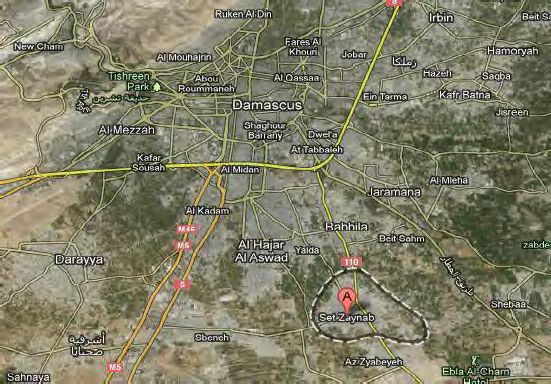


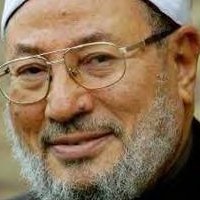
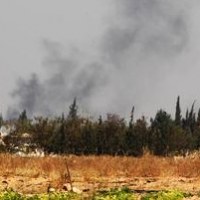
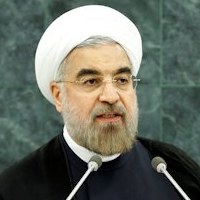
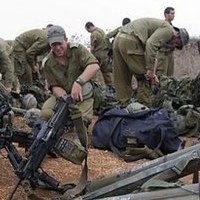
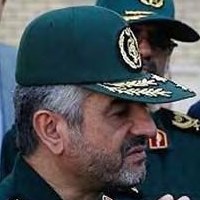




[…] Information Center. The updated English version was published in three parts here: part 1, part 2 and part […]